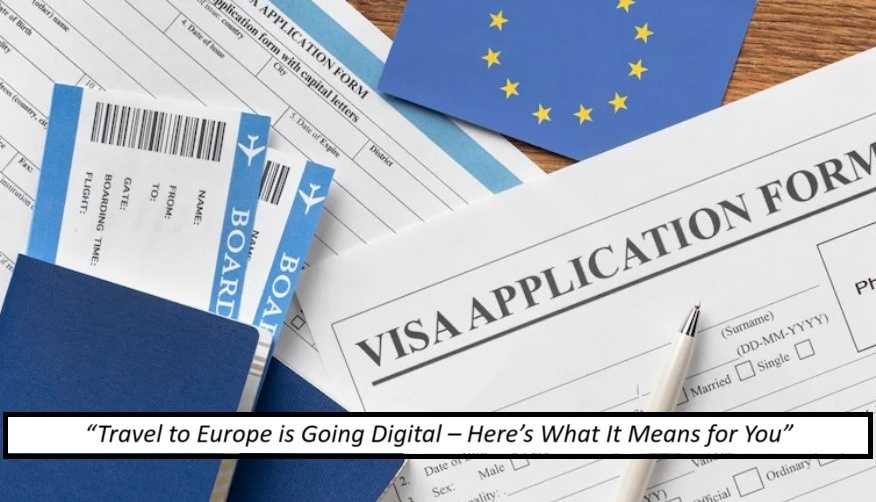EU replaces traditional visa sticker with a secure digital barcode—streamlining the process for millions, including Indians planning Europe trips.
✈️ Big Shift: Schengen Visa Goes Digital
In a major overhaul to Europe’s travel system, the European Union (EU) is phasing out the traditional Schengen visa sticker, replacing it with a secure digital visa in the form of a 2D barcode. This change will affect all travellers—including Indian citizens—looking to visit any of the 29 Schengen Area countries.
Starting with trials at the 2024 Paris Olympics, the system is being rolled out in phases, with full implementation expected by 2028.
💻 What Is the Digital Schengen Visa?
The digital Schengen visa is part of the EU’s initiative to modernize and digitize its border management and visa processing systems. Here’s what’s changing:
- No more physical visa stickers in passports.
- Visas will now be issued as digitally signed 2D barcodes.
- The barcode links to a centralized EU visa database accessible to immigration officials at all borders.
This transformation aims to make travel safer, faster, and paperless.
🔄 Key Features of the New Visa System
- Online Application Portal: Apply for your visa, upload documents, and pay fees—all online.
- Digital Visa Delivery: Receive your visa as a digitally signed barcode, eliminating the need to visit embassies for stickers.
- Real-Time Tracking: Track your visa status via the online platform.
- First-Time Biometrics: First-time applicants must still visit in person for biometric verification.
- Repeat Travel Ease: Frequent travellers will benefit from quicker, contactless entry.
🛂 Upcoming EU Border Control Systems
The digital visa rollout comes alongside two new EU border systems:
1. EES – Entry/Exit System (Launch: October 2025)
- Replaces physical passport stamps.
- Uses biometric data (facial recognition + fingerprints).
2. ETIAS – European Travel Information and Authorisation System (Launch: 2026)
- For visa-exempt travellers (like those from the US, UAE).
- Requires a pre-travel online travel authorisation, similar to the US ESTA.
What This Means for Indian Travellers
Indian passport holders applying for Schengen visas can expect:
- Digital convenience: Submit and receive your visa without visiting an embassy (after first-time biometric collection).
- Streamlined processing: Faster approval times, reduced paperwork.
- Improved travel experience: Faster border clearance using digital e-gates and biometric recognition.
📅 Rollout Timeline
- 2024: Paris Olympics trial with 70,000 digital visas.
- 2025: EES border system launches.
- 2026: ETIAS system launches.
- 2028: Digital Schengen visa becomes mandatory across all EU nations.
📝 Final Thoughts
The EU’s digital transition is set to revolutionize international travel, making it more secure and efficient. For Indian travelers, this change means less hassle, faster processing, and greater transparency. With travel on the rise post-pandemic, now’s the time to get familiar with the digital Schengen visa process.
Also Read : New US Visa Interview Waiver Rules From September 2: Key Changes for Indian Travelers



